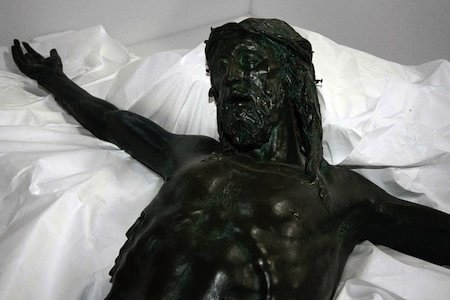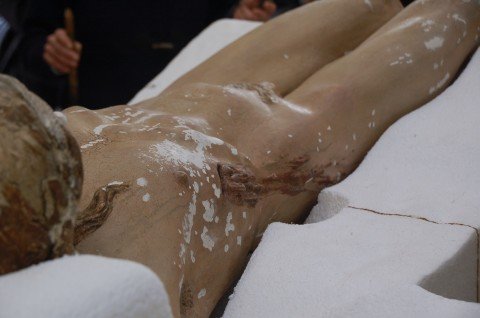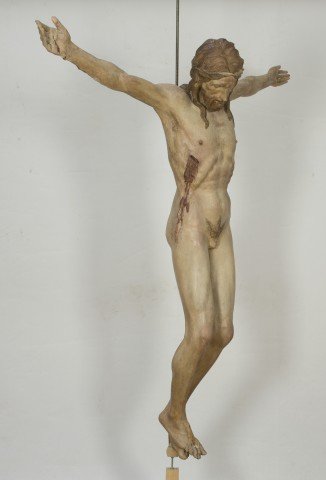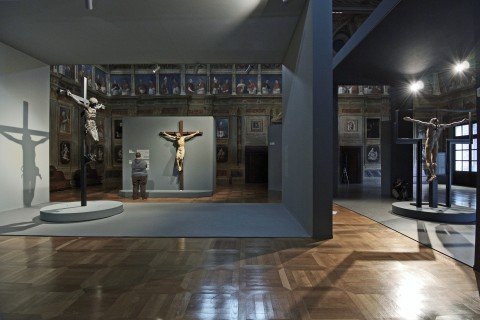Last attribution to Donatello suffering local jealousy in Padua
- Donatello, Crucifixion from Santa Maria dei Servi, Padua. Before the restoration.
- Donatello, Crucifixion from Santa Maria dei Servi, Padua. During the restoration.
- Donatello, Crucifixion from Santa Maria dei Servi, Padua. During the restoration.
- Donatello, Crucifixion from Santa Maria dei Servi, Padua.
- “Donatello svelato”, installation view, Museo Diocesano, Padua.
The two meters high poplar wood made crucifixion in the Church of Santa Maria dei Servi in Padua was attributed to Donatello some years ago by Professor Francesco Caglioti also thanks to some unknown marginal notes written in the XVI century on the copy of the first edition of Giorgio Vasari’s “Le Vite” preserved in the collection of Yale University. Scholar Marco Ruffini, who discovered the crucial notes in 2006, stated that in any case a restoration was required to dispel all doubts about the authorship of this extraordinary sculpture.
And the restoration finally took place last year, with a 13-month-long sophisticated process including X-ray, TAC, various chemical analysis, and a 3D virtual scan generating a Styrofoam shell to prop up the suffering sculpture during the work. Then Ultraviolet light analysis revealed that the Christ pubic region had been covered for a long time with a loincloth, probably made of fabric. According to Italian restorers – who have been financially supported not by the Church that owns the sculpture, but directly by the Italian Ministry of Culture – all this was necessary to remove the dark bronze-like painting covering the surface.
Official documents state that the restoration has been launched only after the approval of the local religious community, that was used to the “dark” version of this highly venerated crucifixion. In 1512, in fact, the Christ sweated blood from his face and from the left side of the body. Apparently it was a fifteen-day-long sweating. But despite – or in full compliance with – the many followers of this miraculous object, the total cost of neither the new restoration nor the exhibition that followed have been officially communicated yet (but apparently the analysis costed 40.000 euro).
Since the end of March, his dramatic Christ has been on show (until 26 July), of course at the Museo Diocesano di Padua (a few meters away from Santa Maria dei Servi), along with two other main crucifixions craved by Donatello. The first one is made in bronze for the Basilica del Santo, again in Padua; while the second was conceived for Santa Croce in Florence. With this latter Donatello challenged his competitor Filippo Brunelleschi, as Giorgio Vasari wrote in a notorious passage of his “Le Vite”.
Yet a second element has not been mentioned by authorities. According to restorer Angelo Pizzolongo, Christ’s hair had been largely damaged probably due to a fall and then redone, in occasion of a precedent restoration, using plaster. Now the old plaster has been removed and the missing part has been replaced using, again, a mix of plaster and glue. The artist who has worked on this extraordinary important crucifixion adding a large portion of the head is the sculptor and jeweller Giovanni Sicuro, also known to friends and estimators as “Minto”. Of course he is from Padua too. In Italian “Sicuro” means “safe”. Well, but safe for whom?
May 26, 2015





